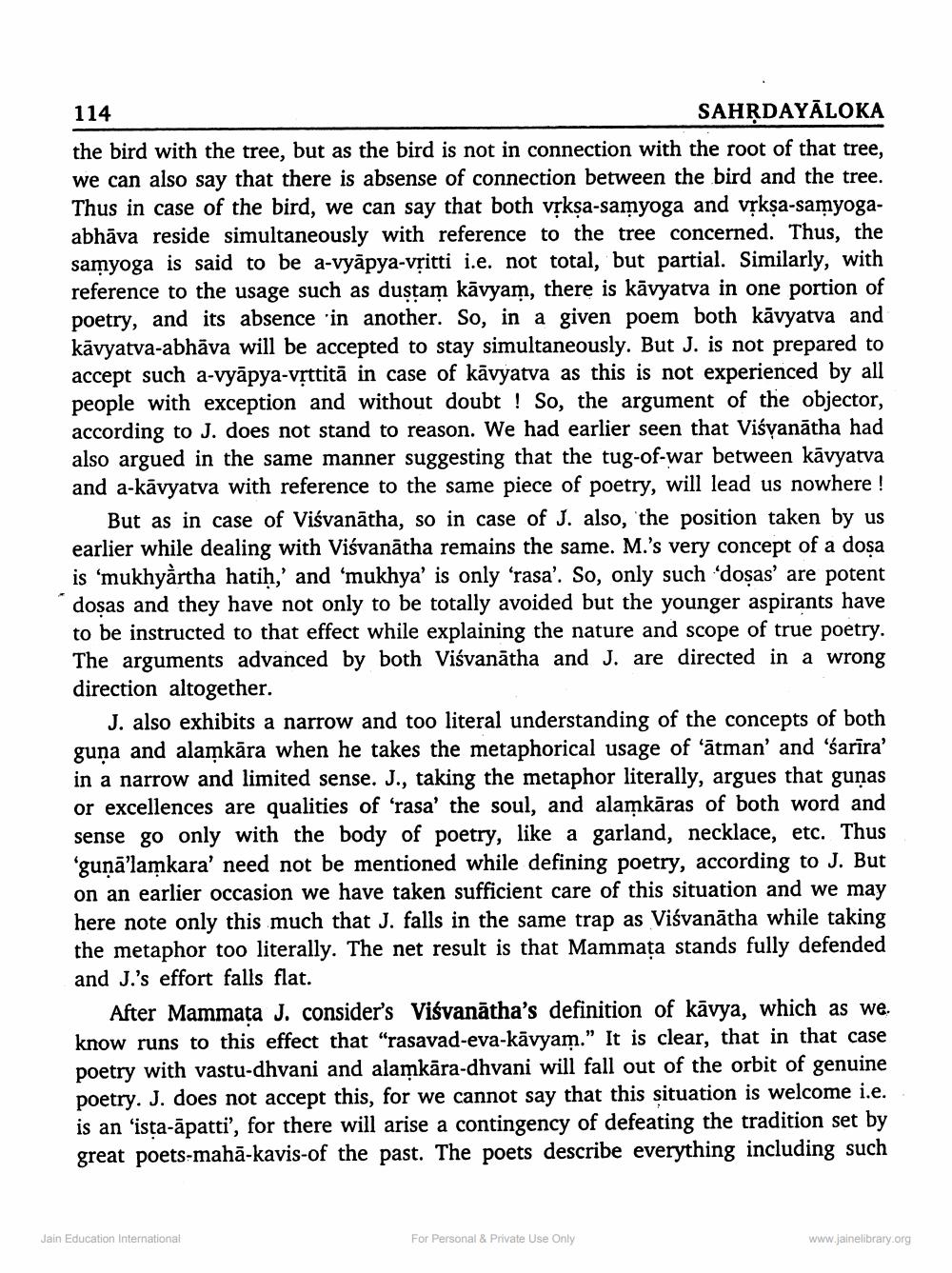________________
114
SAHRDAYĀLOKA the bird with the tree, but as the bird is not in connection with the root of that tree, we can also say that there is absense of connection between the bird and the tree. Thus in case of the bird, we can say that both vşkşa-samyoga and vệkşa-samyogaabhāva reside simultaneously with reference to the tree concerned. Thus, the samyoga is said to be a-vyāpya-vritti i.e. not total, but partial. Similarly, with reference to the usage such as dustam kāvyam, there is kāvyatva in one portion of poetry, and its absence in another. So, in a given poem both kāvyatva and kāvyatva-abhāva will be accepted to stay simultaneously. But J. is not prepared to accept such a-vyāpya-vșttitā in case of kāvyatva as this is not experienced by all people with exception and without doubt ! So, the argument of the objector, according to J. does not stand to reason. We had earlier seen that Viśyanātha had also argued in the same manner suggesting that the tug-of-war between kāvyatva and a-kavyatva with reference to the same piece of poetry, will lead us nowhere !
But as in case of Viśvanātha, so in case of J. also, the position taken by us earlier while dealing with Viśvanātha remains the same. M.'s very concept of a dosa is 'mukhyårtha hatih,' and 'mukhya' is only 'rasa'. So, only such 'dosas' are potent dosas and they have not only to be totally avoided but the younger aspirants have to be instructed to that effect while explaining the nature and scope of true poetry. The arguments advanced by both Viśvanātha and J. are directed in a wrong direction altogether.
J. also exhibits a narrow and too literal understanding of the concepts of both guna and alamkāra when he takes the metaphorical usage of 'atman' and 'śarīra' in a narrow and limited sense. J., taking the metaphor literally, argues that gunas or excellences are qualities of 'rasa' the soul, and alamkāras of both word and sense go only with the body of poetry, like a garland, necklace, etc. Thus 'gunā'lamkara' need not be mentioned while defining poetry, according to J. But on an earlier occasion we have taken sufficient care of this situation and we may here note only this much that J. falls in the same trap as Viśvanātha while taking the metaphor too literally. The net result is that Mammata stands fully defended and J.'s effort falls flat.
After Mammata J. consider's Visvanātha's definition of kāvya, which as we. know runs to this effect that "rasavad-eva-kāvyam.” It is clear, that in that case poetry with vastu-dhvani and alamkāra-dhvani will fall out of the orbit of genuine poetry. J. does not accept this, for we cannot say that this situation is welcome i.e. is an 'ista-āpatti', for there will arise a contingency of defeating the tradition set by great poets-mahā-kavis-of the past. The poets describe everything including such
Jain Education International
For Personal & Private Use Only
www.jainelibrary.org




